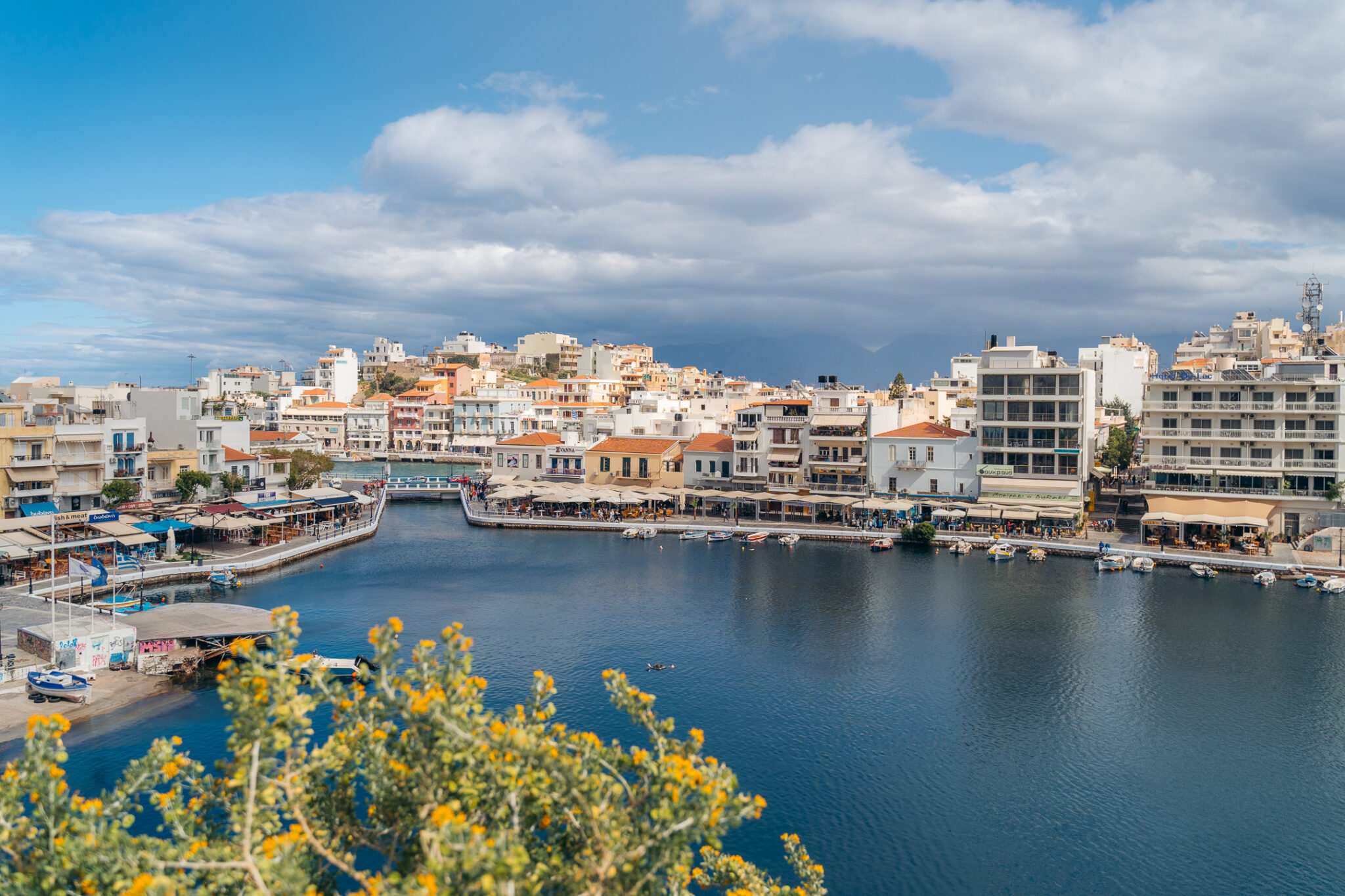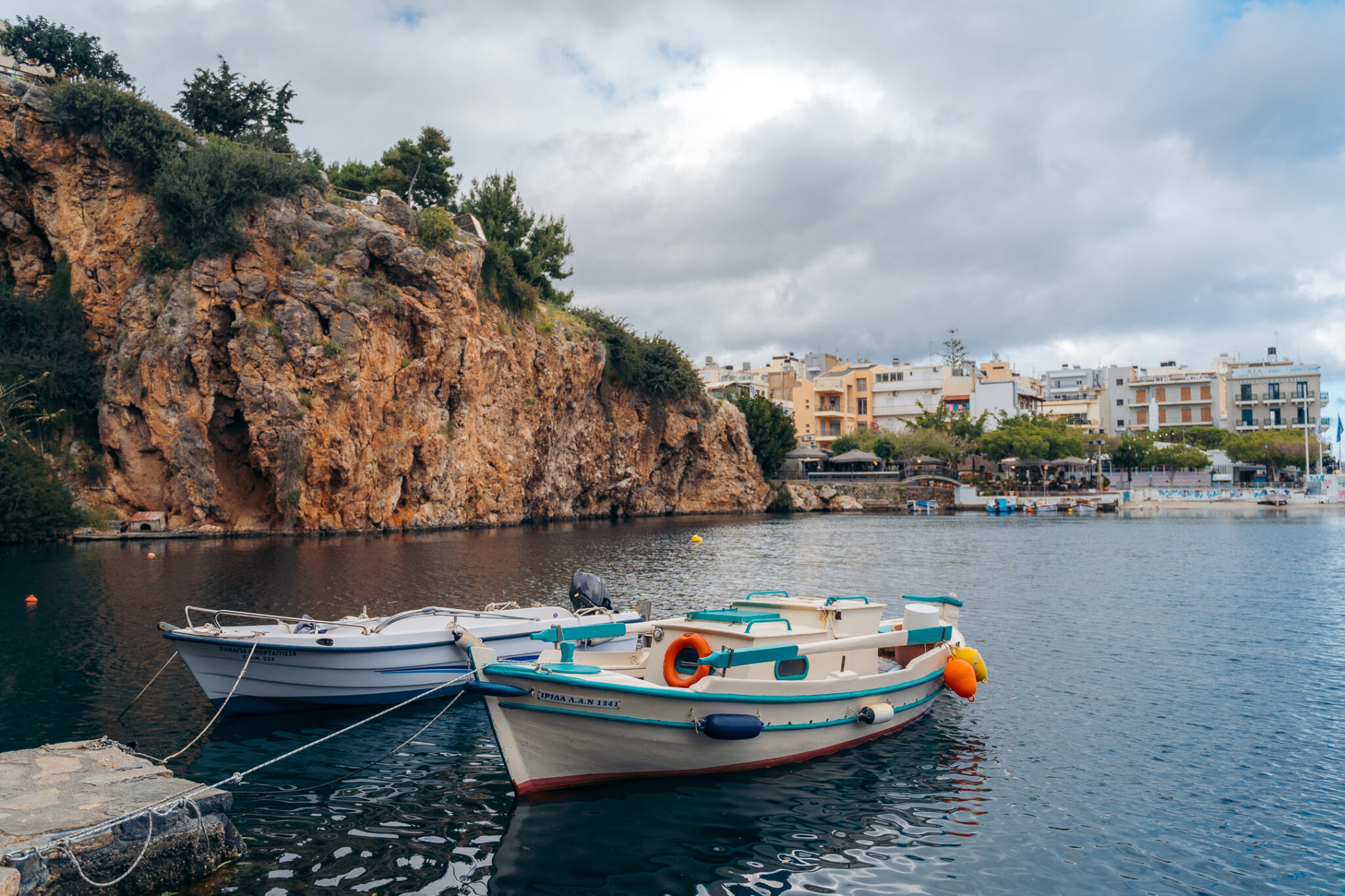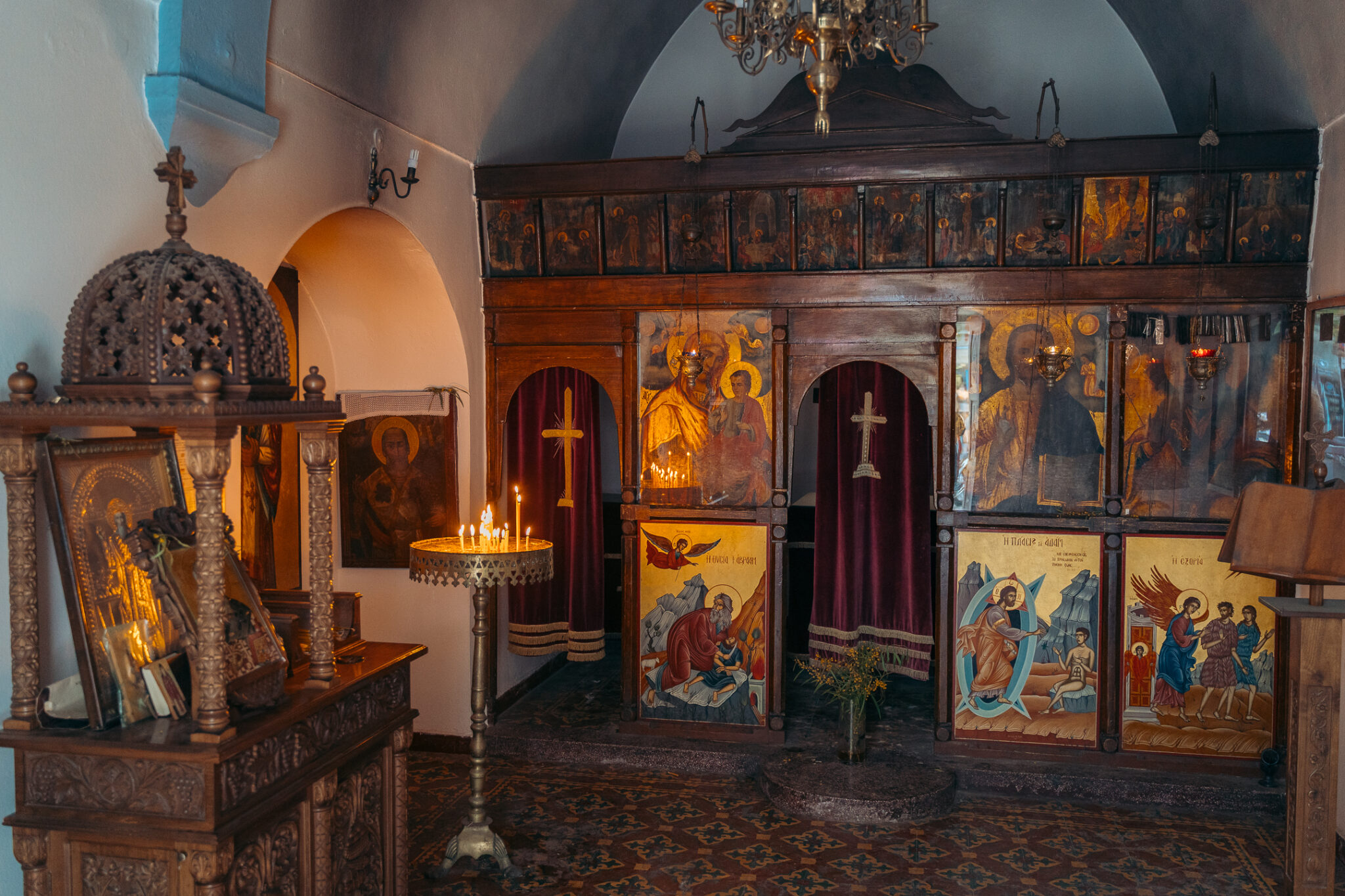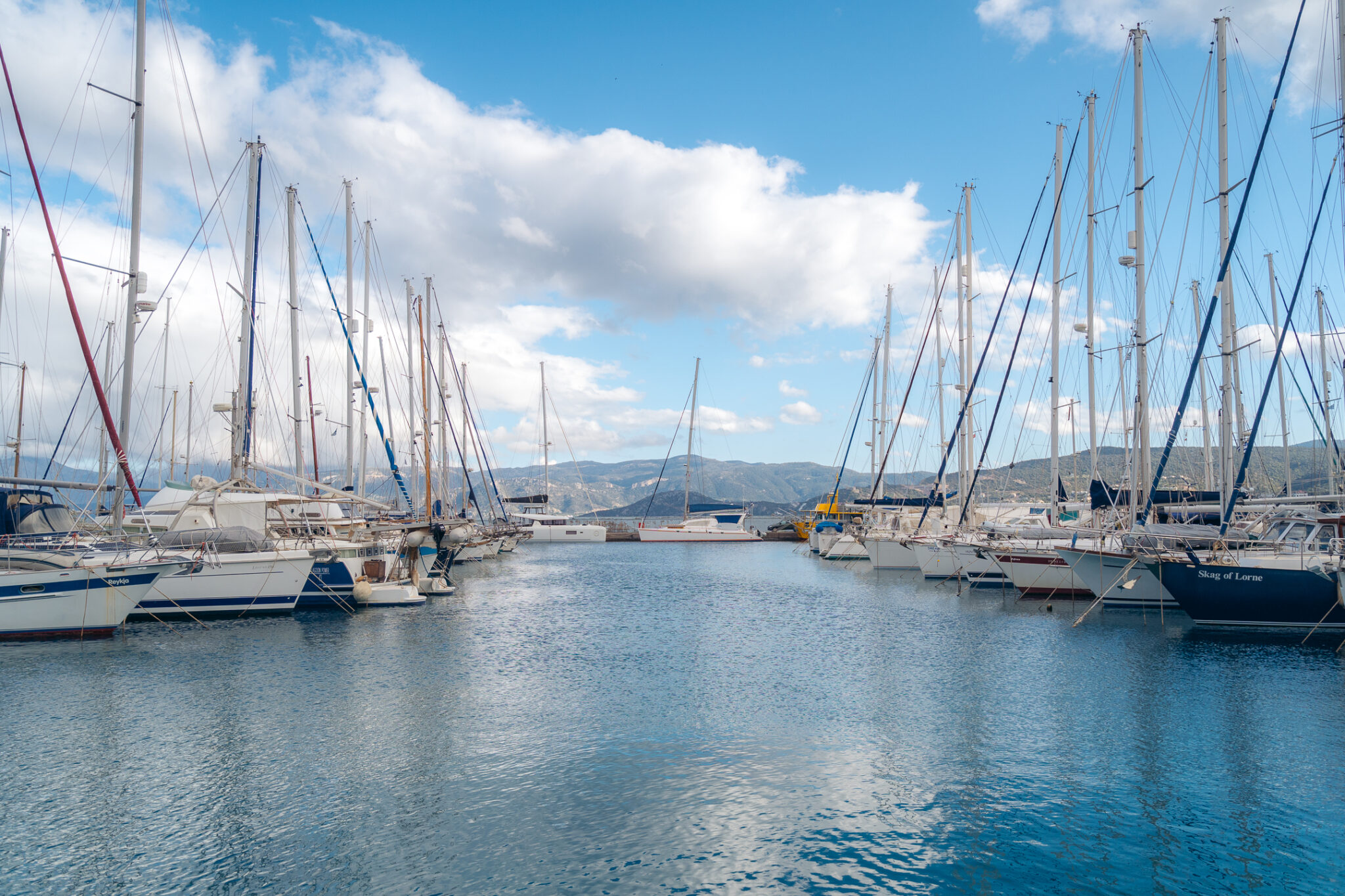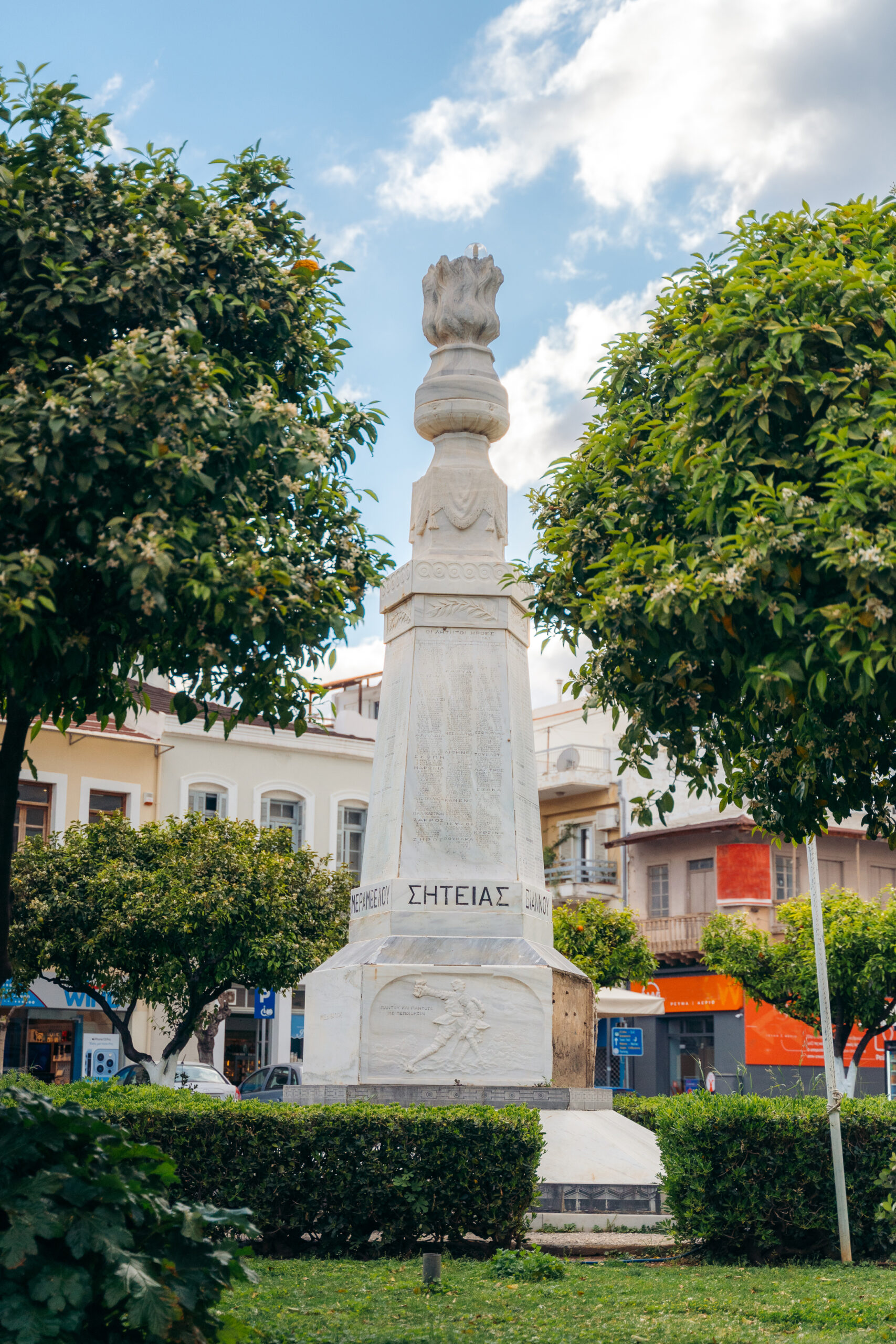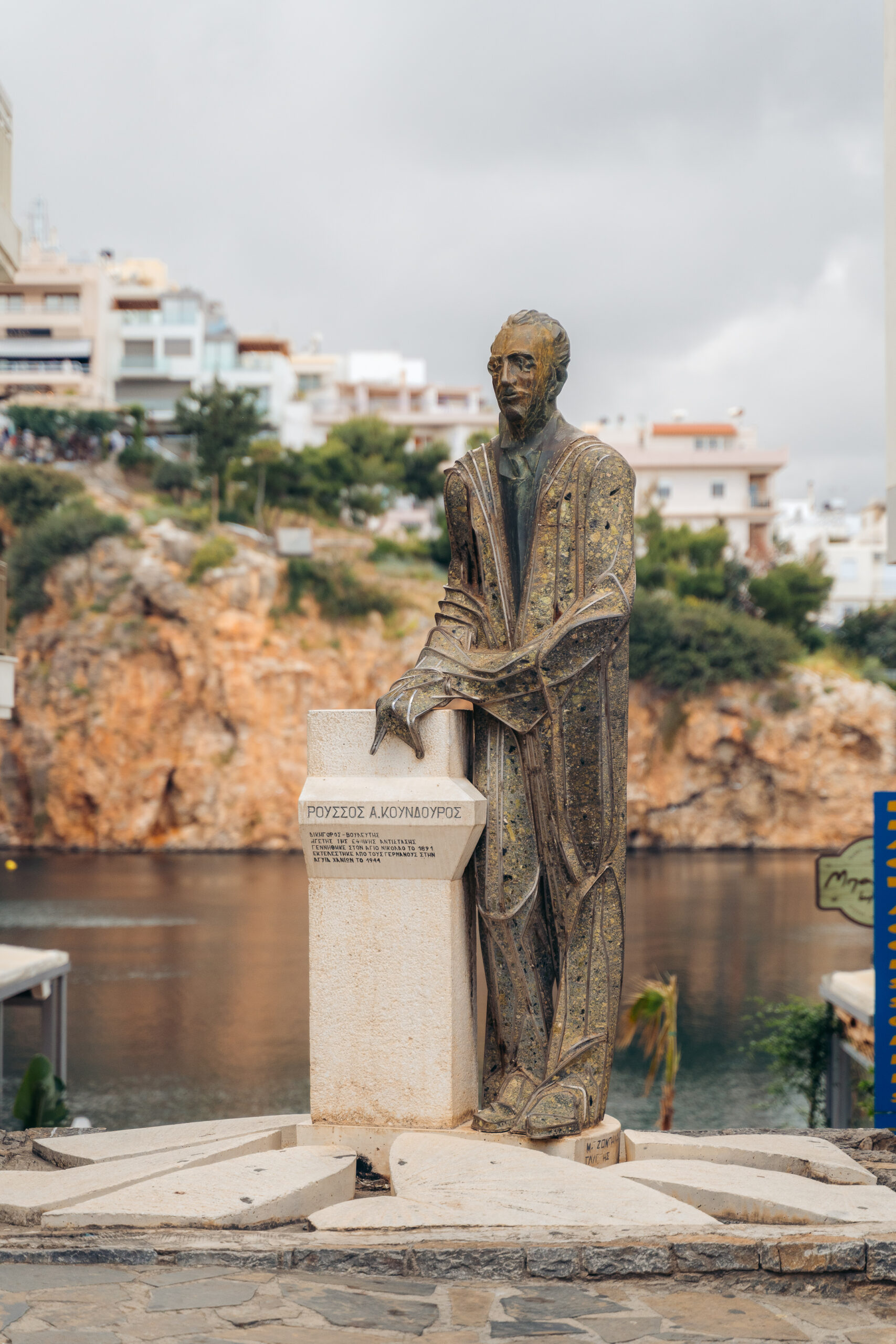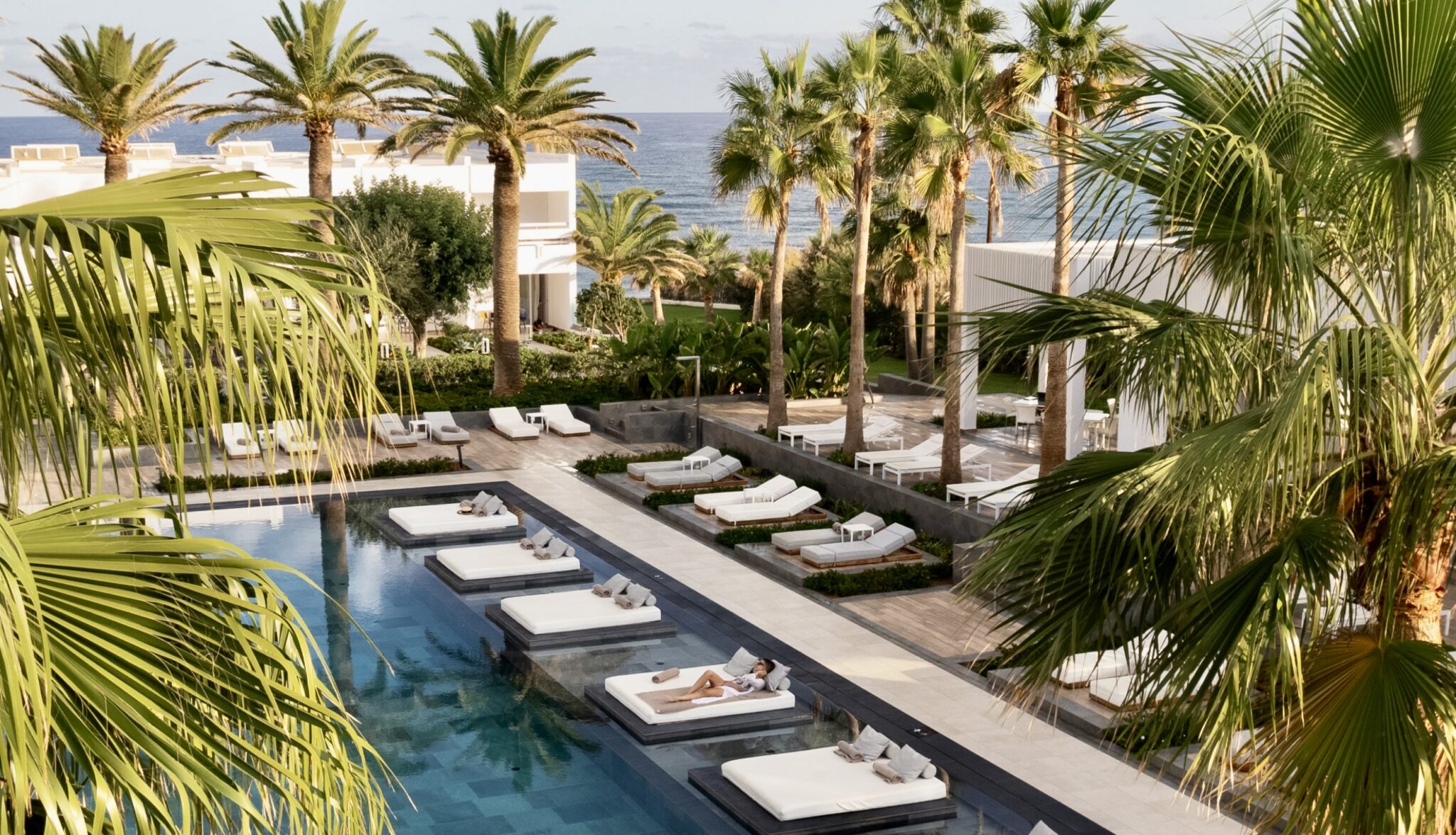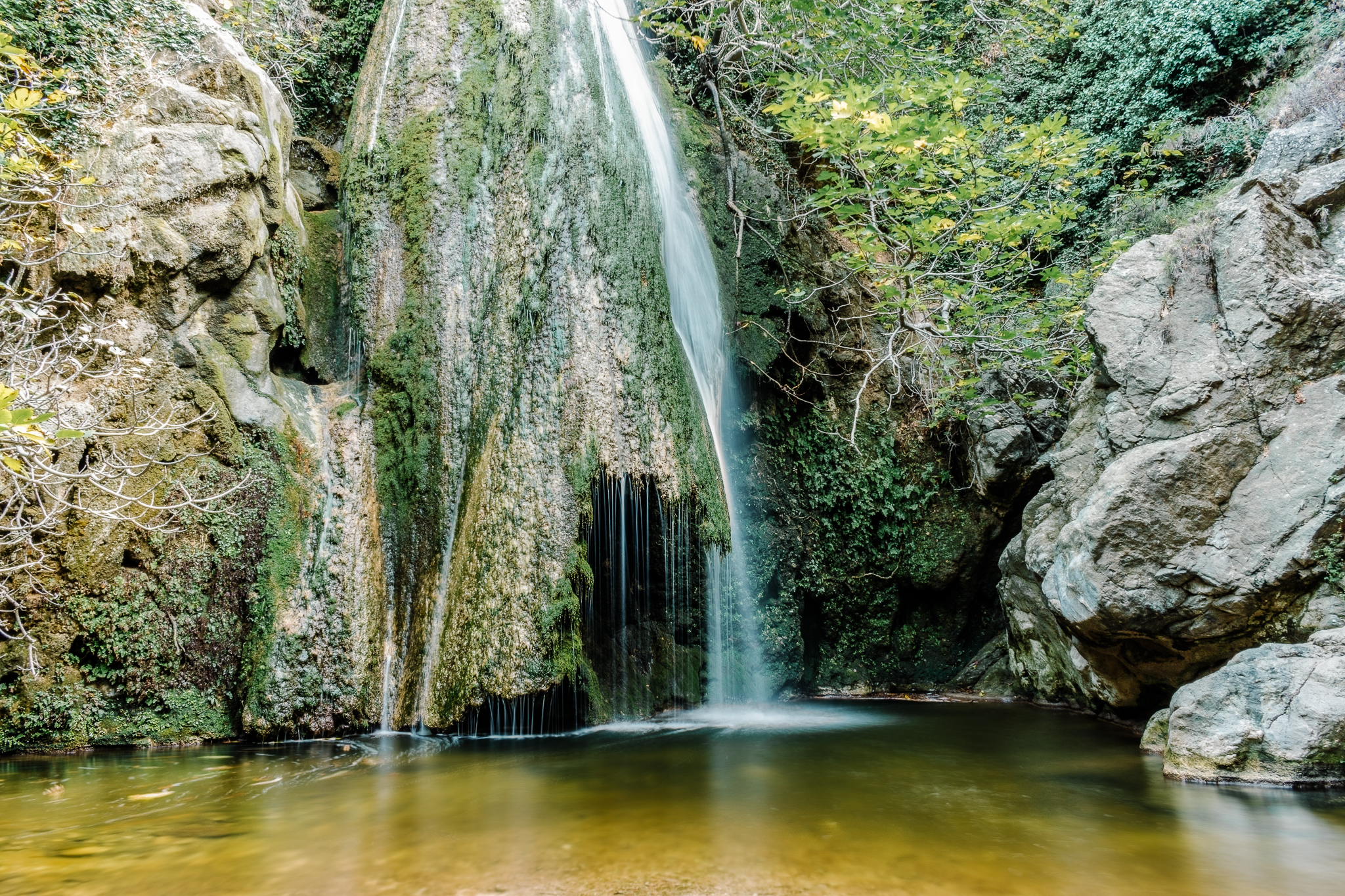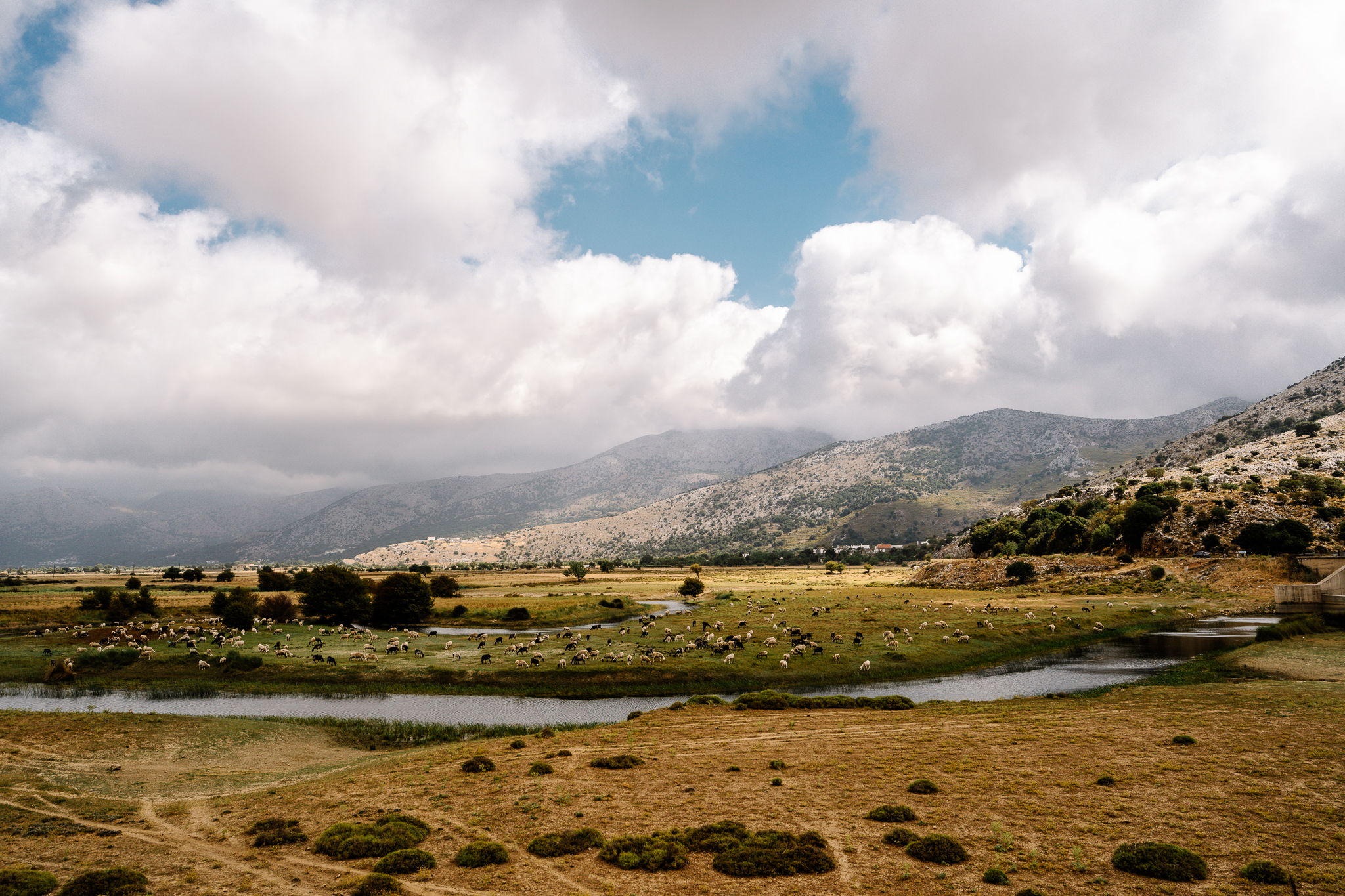Agios Nikolaos, a cosmopolitan, international attraction in Crete’s northeast, or, more specifically, on the west side of Mirabello Bay, attracts thousands of visitors from all over the world each year. This coastal town, developed on seven hills, also features Lake Voulismeni, a key destination at the center of the town, simply referred to as “the lake” by locals .
This lake, a place of unique beauty, has been associated with dozens of legends, which make it an even more wondrous place. According to ancient Greek mythology, the goddesses Athena and Artemis bathed here. Lake Voulismeni, a former freshwater lake, was connected to the sea via a narrow passage created in 1870. The lake is surrounded by tall red rocks that enhance its beauty.
This lake is also associated with two urban legends. According to one, the lake is bottomless, while the other contends that the lake is somehow connected with Santorini’s volcano! Of course, neither of the two are true, but these urban legends do highlight the lake’s importance for the locals.
In ancient times, the Agios Nikolaos’ area was inhabited under the name Kamara. During the period of Venetian rule, the area possessed a castle, Mirabello Castle. The settlement was deserted during the Ottoman period but re-inhabited in the 19th century. The modern-day settlement started taking shape during the Cretan revolt of 1866, a three-year uprising in Crete against Ottoman rule. People from Fourni, Kritsa, Heraklion and Sfakia helped establish the town in the modern era. Ruins from the old Venetian castle were used to construct new buildings.
The town’s modern-day name hails from a Byzantine chapel at its bay. The main pillar of the town’s economy is tourism, with the Lassithi region being the pioneer of tourism development in whole Crete. The main pillar of the town’s economy is tourism, with the Lassithi region being the pioneer of tourism development in the whole of Crete. At the same time, olive cultivation is anοther important element of the economy.
City highlights include a view towards the lake from the park with tamarisks, as well as a downhill trail that reaches the lake area’s fishing boats. At the other side of town, it is worth taking a stroll at the marina. Regattas are staged in the wider area at certain times of the year. Other features include impressive statues, scattered at various points around town, such as “The Abduction of Europa”, a statue located at the port’s pier. It was designed by film director Nikos Koundouros and created by the sculptors Nikos and Pantelis Sotiriadis. Another element that makes the town special and worth-visiting is the stairs, decorated by the ASKT and the Association of Architects of Lassithi Prefecture, through which one can access all parts of the town. Kitroplateia, a main beach area with a pedestrianised street leading to the marina, is another attraction. The name of this beach comes from citrus fruit trading activity. The water’s depth enabled merchant vessels to be loaded with merchandise long before the city gained a port.
Read also:
Amari: A lush Cretan region with picturesque villages
Oropedio Lasithiou: A special route to the most authentic part of mountainous Crete



